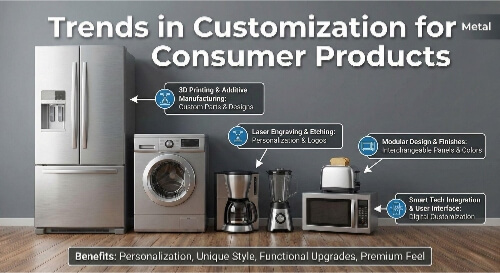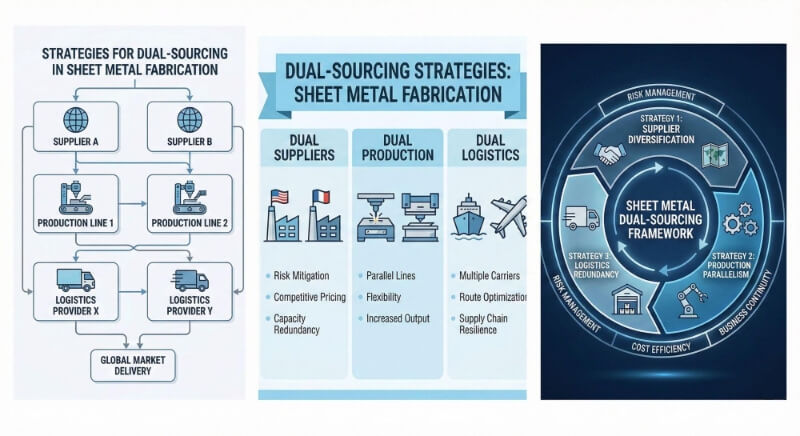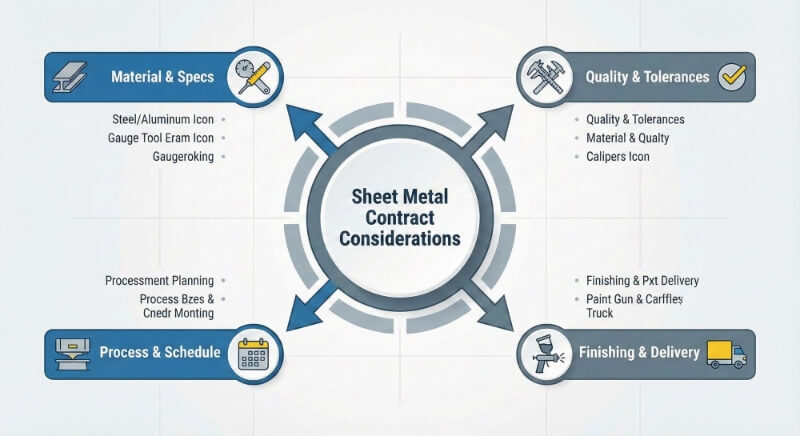Many factories want to process metal parts with high speed and accuracy. Traditional cutting methods often create heat, wear out tools, and limit precision. Laser Beam Machining solves these problems. It cuts, drills, or engraves metal and other materials using a focused laser. This method reduces tool wear and delivers clean results.
Laser Beam Machining sounds simple, but the science behind it is fascinating. Next, we will examine how this process works and what makes it precise.
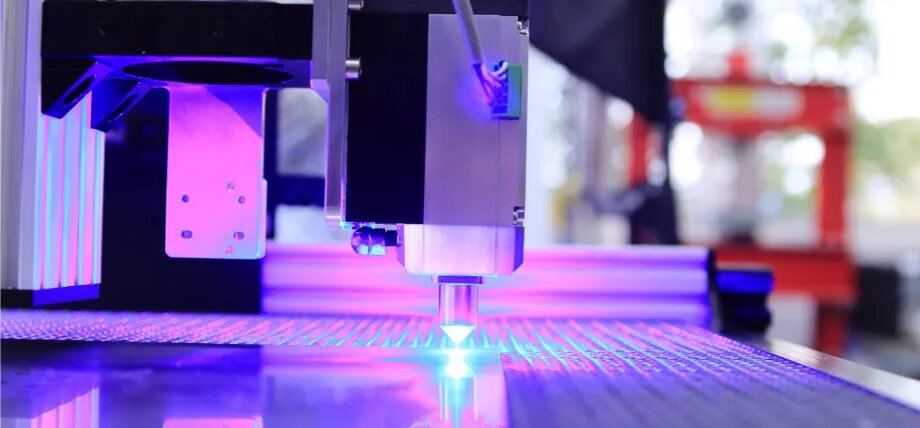
What is Laser Beam Machining?
Laser Beam Machining (LBM) is a non-contact process that uses a focused beam of light to remove material. The laser heats a small area of the workpiece. The material melts or vaporizes. The beam can cut, drill, or engrave depending on the settings.
LBM works on metals, plastics, ceramics, and even glass. It does not use a tool bit, so there’s no tool wear. It’s fast and accurate, especially for thin or detailed parts. The laser beam is controlled by CNC or computer programs. This helps achieve consistent and repeatable results.
Laser technology started in the 1960s. Theodore Maiman built the first working laser in 1960. In the late 1960s and early 1970s, engineers began using lasers to cut and drill materials. Early systems were limited in power and speed.
As technology improved, lasers became stronger and more stable. By the 1980s, CO2 and Nd: YAG lasers were used in many factories. Fiber lasers came later and brought better energy efficiency and cutting quality.
How Does Laser Beam Machining Work?
Laser beam machining turns electrical energy into a powerful beam of light. This light is focused and directed at a material to cut or remove it. Each step in the process is important to ensure a clean and precise result.
Laser Generation
The process begins with a power source. This power charges a material inside the laser, called the laser medium. The medium can be CO₂ gas, crystal, or fiber. When energized, the medium gives off light particles called photons.
These photons bounce between two mirrors. One of the mirrors is partly open. The light that escapes through this mirror becomes the laser beam.
The type of laser you use depends on the job. CO₂ lasers are suitable for plastics, wood, and some metals. Fiber lasers are better for cutting hard or reflective metals like stainless steel or aluminum.
Focusing the Laser
After the beam is created, it passes through lenses or mirrors. These focus the light into a small, sharp point. This spot is often smaller than 0.2 mm.
The tighter the focus, the more energy it packs into one area. This focused beam can reach temperatures above 10,000°C. It’s hot enough to melt or even vaporize most materials on contact.
Material Interaction
When the laser hits the surface, the material absorbs the heat. Depending on the type of material, it will melt, burn, or evaporate. A gas like nitrogen or oxygen is often used during cutting. It blows away melted material and keeps the edge clean.
Because the laser works quickly and precisely, it doesn’t overheat the area around the cut. This creates a small heat-affected zone (HAZ), which helps reduce part distortion and keeps edges sharp.
Precision Motion
To get the right shape, the laser must move with high accuracy. This is done using CNC controls, which guide the laser based on a digital design, usually a CAD file.
The laser head or the worktable can move in different directions, allowing for flexible and complex cuts. Precision motors and sensors help keep everything aligned, which is why laser machines can produce detailed and repeatable parts.
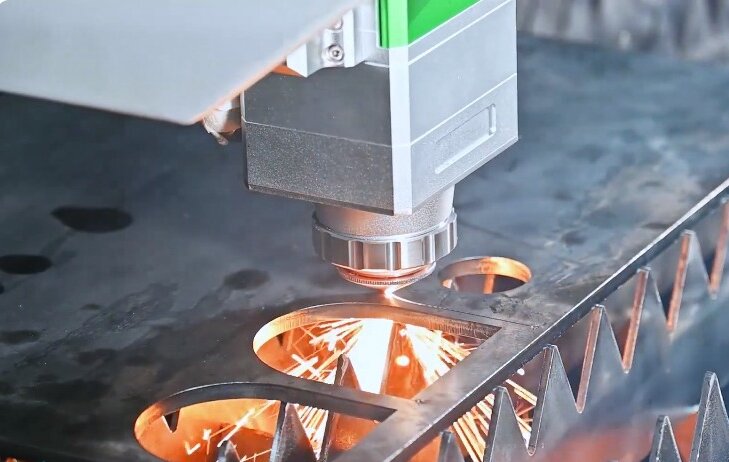
Key Components of Laser Beam Machining
Every part of a laser system has a job. Together, they create a powerful and focused beam that removes material with high precision.
Power Supply
The power supply gives the system the energy it needs to run. It sends electrical current to the laser medium to get things started. The amount of power affects how strong and fast the laser cuts. A steady power flow is essential for smooth operation. In factories, laser machines often use power from a few hundred watts to several kilowatts.
Flash Lamps
Flash lamps are used in some lasers, like Nd: YAG lasers. These lamps give off short bursts of light. That light charges the laser medium and gets its atoms excited. When the atoms release that energy, they create photons—the building blocks of the laser beam. You can think of flash lamps as the spark that starts the process.
Capacitor
The capacitor acts like a battery. It stores electrical energy until it’s needed. When the conditions are right, it sends an intense, quick burst to power the flash lamp. Without this burst, the flash lamp wouldn’t have enough energy to fire properly. The capacitor makes sure the laser starts at full strength.
Reflecting Mirror
Mirrors inside the laser system help build up the beam. One mirror reflects all the light. The other lets some light pass through. The beam bounces between these two mirrors many times, gaining strength with each pass. Eventually, the beam escapes through the partly reflective mirror. That becomes the working laser beam. These mirrors must be carefully aligned to keep the beam steady and clean.
Lenses
Lenses focus the laser beam after it leaves the mirror setup. They concentrate the beam into a very small spot. This makes it easier to melt or burn the material quickly. The lens also shapes the cutting area. If the lens is dusty or not aligned properly, the cut may turn out messy or off-center. That’s why good lenses—and keeping them clean—are so important in laser machining.
Types of Lasers Used in Machining
Different laser types are used depending on the material, thickness, and job requirements. Each type has its strengths.
CO₂ Lasers
CO₂ lasers generate the laser beam using a gas mixture that includes carbon dioxide. They operate in the infrared range and are great for cutting, engraving, and marking non-metal materials like wood, plastic, glass, and fabrics.
They can also cut some metals, especially with help from assist gases, but they are not ideal for highly reflective or thick metal parts. These lasers are standard in industries like packaging, signage, and woodworking.
Key points:
- Wavelength: ~10.6 µm
- Best for: Non-metals, thin metals
- Advantages: Smooth cuts, affordable, widely used
- Limitations: Less effective on reflective or thick metals
Nd: YAG Lasers
Nd: YAG stands for Neodymium-doped Yttrium Aluminum Garnet. This is a solid-state laser. It can operate in both pulsed and continuous modes, making it suitable for cutting and drilling.
These lasers work well on metals, especially in applications that need high precision, such as medical devices or electronics. They’re also often used for welding and engraving fine details.
Key points:
- Wavelength: ~1.064 µm
- Best for: Metals, fine cutting, welding
- Advantages: High power, precise, versatile
- Limitations: More maintenance, lower energy efficiency
Fiber Lasers
Fiber lasers use optical fibers to generate and deliver the laser beam. They’re known for being efficient, stable, and long-lasting. These lasers are excellent for cutting reflective metals like copper, aluminum, and stainless steel.
Fiber lasers have a small beam size, which means more energy in a smaller area. That makes them fast and accurate. They’re commonly used in automotive, aerospace, and electronics industries.
Key points:
- Wavelength: ~1.06 µm
- Best for: Metal cutting, especially reflective metals
- Advantages: High speed, low maintenance, long service life
- Limitations: Higher upfront cost
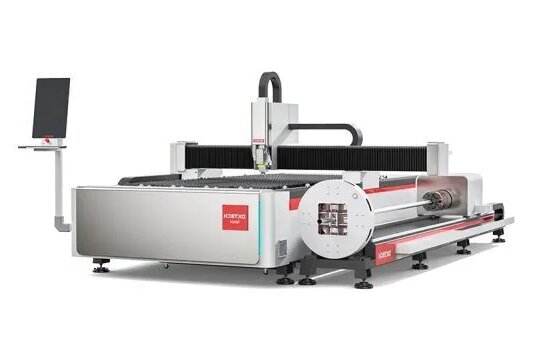
Materials Suitable for Laser Beam Machining
Laser beam machining works on many materials, but performance depends on material type, thickness, and reflectivity. Choosing the right material ensures better cutting quality and efficiency.
Metals
Lasers are widely used in manufacturing to cut metals. Materials like mild steel, stainless steel, aluminum, and titanium are commonly processed.
- Mild steel cuts easily and leaves clean edges.
- Stainless steel needs more power and assist gas to avoid oxidation.
- Aluminum is lightweight but reflective, which makes it trickier to cut—fiber lasers handle it better.
- Titanium requires precise control to prevent heat distortion or poor edge quality.
Lasers are ideal for both thin sheets and moderately thick plates. Other methods, like plasma cutting, may be more practical for very thick metals.
Non-Metals
Laser machining isn’t just for metals. It also works well on many non-metal materials:
- Plastics (like acrylic and polycarbonate) can be cut or engraved easily with CO₂ lasers.
- Ceramics can be marked or drilled, though they may crack if not handled carefully.
- Composites (like carbon fiber or FR4) can be laser processed, but some release harmful fumes and need ventilation.
CO₂ lasers are commonly used for non-metals, especially in the packaging, signage, and electronics industries.
Material Thickness and Reflectivity Considerations
Two critical factors affect how well a laser works: thickness and reflectivity.
- Thinner materials are easier to cut and allow faster speeds.
- Thicker materials need more power and may slow the process.
- Reflective surfaces, like copper or aluminum, can reflect the laser back and damage the machine. Fiber lasers are better suited for these materials.
Process Parameters and Their Effects
Laser Beam Machining performance depends on several key settings. Each parameter affects how the material reacts and the quality of the final cut or mark.
Laser Power and Energy Density
Laser power controls how much energy the beam delivers per second. Higher power cuts faster and deeper, but can also cause more heat damage.
Energy density is how much power is packed into a small area. It depends on both the power and how tightly the beam is focused. More energy in a smaller spot makes cutting more efficient.
- High power is better for thick or rigid materials.
- Low power gives cleaner edges on thin or delicate parts.
- Too much power may overheat the part or increase the heat-affected zone (HAZ).
Pulse Duration and Frequency
In pulsed lasers, energy is delivered in short bursts rather than a continuous stream.
- Pulse duration is how long each burst lasts. Shorter pulses cause less heat buildup and allow better control.
- Pulse frequency is how many bursts happen each second. Higher frequency increases speed but may reduce peak energy.
Short, high-frequency pulses are ideal for precise cutting or marking. Longer pulses work well for deeper cuts but can create more thermal stress.
Focus Spot Size and Beam Quality
Focus spot size is the width of the laser beam at the cutting point. A smaller spot means more energy in one place, which leads to sharper and more accurate cuts.
Beam quality refers to how stable and uniform the laser is. A high-quality beam holds its shape and focus better, especially over longer distances or when cutting fine details.
- A smaller spot size means finer cuts and smaller kerfs.
- Poor beam focus can cause rough edges or missed shapes.
- Clean optics and proper alignment help maintain good beam quality.
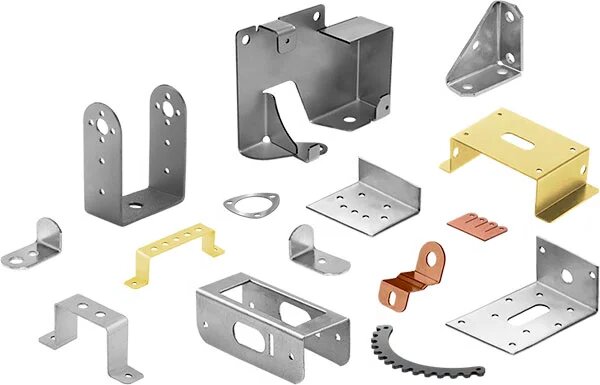
Advantages of Laser Beam Machining
Laser beam machining offers many benefits compared to traditional cutting methods. It’s fast, precise, and flexible, making it a top choice in many industries.
High Precision and Accuracy
Laser cutting can achieve tight tolerances, often within ±0.05 mm or better. The beam is focused into a tiny spot, allowing clean, detailed cuts. This is ideal for parts that need exact shapes, sharp edges, or fine features.
Minimal Tool Wear
Since laser cutting is a non-contact process, no physical tool touches the material. That means no cutting blades to sharpen or replace. The beam does all the work, so there’s little to no wear and tear.
Ability to Cut Complex Shapes
Laser machines follow CNC-programmed paths, which allow them to cut sharp angles, tight curves, holes, or delicate patterns without switching tools. Thus, complex designs that are hard to machine with drills or saws can be handled easily.
Non-Contact Process
Because no force is applied to the material, thin or delicate parts don’t bend or crack. There’s also no vibration or friction, which helps protect fragile components. This also reduces the risk of tool marks or surface damage.
Limitations and Challenges
While laser beam machining has many strengths, it also has some drawbacks. Understanding these helps you decide when laser cutting is the right choice—and when it’s not.
High Equipment Cost
Laser machines, especially high-power or fiber models, can be expensive. The initial cost includes the machine, cooling system, CNC controls, and ventilation setup.
Maintenance, spare parts, and skilled operators also add to the total investment. This can be a barrier for small workshops or low-budget projects.
Limited Material Thickness
Laser cutting is best for thin to medium-thick materials. For example, fiber lasers can cut up to 25 mm of mild steel efficiently, but beyond that, speed drops and cut quality may suffer.
Plasma or waterjet cutting may be more practical for very thick plates or heavy-duty applications.
Thermal Effects on Sensitive Materials
Lasers generate high heat, which can cause problems in heat-sensitive materials. Some plastics may melt or give off harmful fumes. Thin metals may warp or develop a wide heat-affected zone (HAZ) if not cut carefully.
Materials like copper and brass reflect light and may require special handling or higher-power lasers.
Safety and Operational Considerations
Laser systems involve high voltages, bright beams, and sometimes toxic fumes. Proper shielding, exhaust systems, and personal protective equipment (PPE) are essential.
Operators must be trained to handle laser-specific risks, like beam reflections or gas leaks. The process can pose safety hazards in the shop without the proper setup.
Applications Across Industries
Laser beam machining is used in many industries because it offers high precision, fast cutting, and clean results. Let’s look at where and how it’s commonly applied.
Aerospace and Aviation
In the aerospace industry, accuracy and part reliability are critical. Laser cutting is used for lightweight metal parts, engine components, and complex brackets. It helps reduce part weight without sacrificing strength.
Lasers also cut high-performance alloys like titanium or Inconel with great precision. This is important in aircraft where material performance under stress matters.
Medical Device Manufacturing
Medical parts often require micro-scale features and clean, burr-free edges. Laser machining creates surgical tools, implants, stents, and diagnostic components.
Because the process is non-contact and highly controlled, it avoids contamination and damage to delicate parts. Nd: YAG and fiber lasers are ubiquitous in this field.
Electronics and Microfabrication
Laser machining shines in electronics for cutting, drilling, and marking small parts like circuit boards, connectors, and sensors. It’s also used for micro-machining silicon wafers and plastic housings.
Short pulse lasers can create very fine features without overheating nearby areas, keeping sensitive components safe from damage.
Automotive and Tooling
In automotive manufacturing, lasers cut body panels, brackets, gears, and interior components. They also help in trimming and welding tasks.
Laser machining supports mass production with high repeatability. It also allows flexible design changes through simple CAD file updates—no need to make new tools or dies.
Conclusion
Laser Beam Machining is a precise, clean, and flexible cutting method. It uses a focused laser to cut or engrave metals and non-metals accurately. The process offers clear benefits—tight tolerances, no tool wear, and the ability to handle complex shapes. However, it also has limits, such as high equipment costs, thickness constraints, and heat effects on certain materials.
Are you looking for laser cutting services or custom parts? We support fast prototypes and high-volume production with tight tolerances and fast lead times. Contact us today to get a quote.
Hey, I'm Kevin Lee

For the past 10 years, I’ve been immersed in various forms of sheet metal fabrication, sharing cool insights here from my experiences across diverse workshops.
Get in touch

Kevin Lee
I have over ten years of professional experience in sheet metal fabrication, specializing in laser cutting, bending, welding, and surface treatment techniques. As the Technical Director at Shengen, I am committed to solving complex manufacturing challenges and driving innovation and quality in each project.

